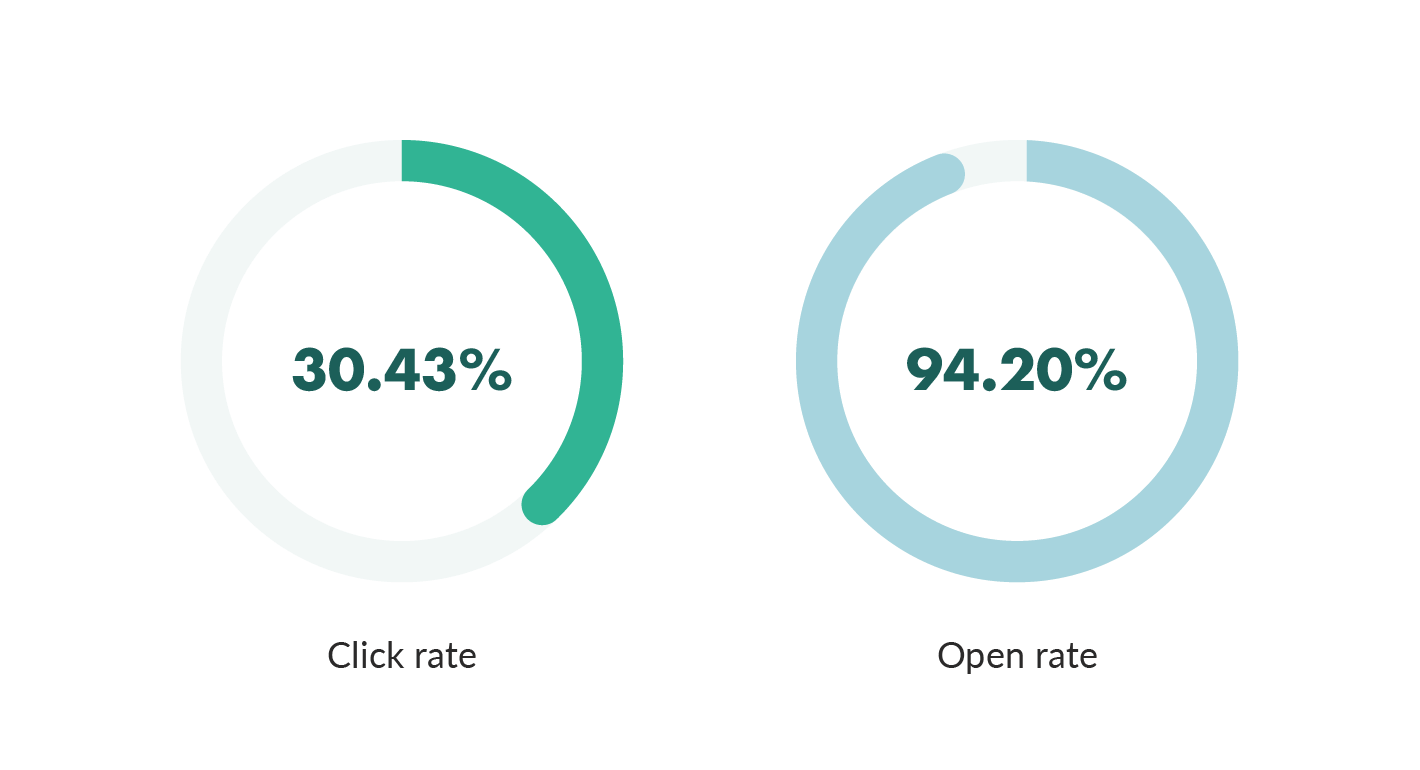In today’s digital landscape, email marketing software remains a powerful tool for businesses to engage with their audience and drive conversions. However, to maximize email campaign effectiveness, measuring and tracking the right metrics is essential. In this article, we will explore the most crucial email marketing metrics every marketer should track. Businesses can optimize their email marketing strategies and outperform competitors by focusing on these key performance indicators (KPIs).
Open Rate: Captivating Recipients’ Attention
The open rate is a fundamental metric that measures the percentage of recipients who open an email. To increase the open rate and grab the attention of your audience, consider all the email marketing best practices and implement the following strategies:
- Crafting Compelling Subject Lines: Create subject lines that are concise, engaging, and instill curiosity. Incorporate power words and personalize the subject lines whenever possible.
- A/B Testing: Experiment with different subject lines, sender names, and preview texts to identify the most effective combinations.
- Segmenting Your Audience: Tailor your emails to specific audience segments to deliver more targeted and relevant content.
Click-Through Rate (CTR): Driving Engagement
The click-through rate measures the percentage of recipients clicking links within an email. Increasing the CTR is crucial to driving engagement and guiding recipients toward desired actions. Here’s how you can optimize your email campaigns for a higher CTR:
- Compelling Call-to-Action (CTA): Use clear, persuasive CTAs that stand out. Incorporate actionable language and create a sense of urgency.
- Relevant and Personalized Content: Ensure that the content of your email aligns with the recipient’s preferences and interests. Leverage data and segmentation to deliver tailored content.
- Mobile Optimization: With the growing number of mobile users, optimizing your emails for mobile devices is essential. Ensure that your email templates are responsive and easily readable on small screens.

Conversion Rate: Maximizing ROI
The conversion rate is a critical metric that measures the percentage of recipients who complete a desired action, such as making a purchase or filling out a form. To boost your conversion rate, consider implementing the following strategies:
- Clear and Relevant Landing Pages: Ensure that the landing page aligns with the content of the email and provides a seamless transition for the recipient.
- Streamlined Conversion Process: Minimize the steps required for recipients to complete the desired action. Simplify forms and remove any potential barriers or distractions.
- Personalization and Social Proof: Tailor your emails to the recipient’s preferences and incorporate social proof elements, such as customer testimonials or case studies, to build trust and credibility.
Bounce Rate: Optimizing Deliverability
The bounce rate measures the percentage of emails that are undeliverable. A high bounce rate can negatively impact your email deliverability and sender reputation. To reduce the bounce rate, consider the following email marketing strategies:
- Maintain a Clean Email List: Regularly remove invalid or inactive email addresses from your mailing list to improve deliverability.
- Implement Double Opt-In: Use a double opt-in process to ensure subscribers have confirmed their email addresses, minimizing the chances of fake or mistyped addresses.
- Monitor and Address Bounce Types: Identify the types of bounces (hard or soft) and take appropriate actions to resolve any underlying issues.
Unsubscribe Rate: Retaining Subscribers
The unsubscribe rate indicates the percentage of recipients who opt out of your email list. While it is natural to experience some unsubscribes, reducing this rate is crucial for maintaining a healthy and engaged subscriber base. Consider the following strategies to minimize unsubscribes:
- Frequency and Relevance: Ensure your email frequency meets your audience’s expectations. Deliver valuable and relevant content that resonates with their needs and interests.
- Subscription Preferences: Provide subscribers with options to manage their email preferences, allowing them to choose the frequency and types of emails they receive.
- Exit Surveys: When a subscriber decides to unsubscribe, consider implementing an exit survey to gather feedback and insights for improvement.
Email Sharing Rate: Amplify Reach
The email sharing rate measures the percentage of recipients who share your emails with others. Amplify your reach and leverage word-of-mouth marketing with these tactics:
- Social Sharing Buttons: Include prominent social sharing buttons in your emails to encourage recipients to share with their networks.
- Engaging and Shareable Content: Get inspired by other email marketing examples and create content that evokes emotion, provides value, or incentivizes recipients to share.
- Referral Programs: Implement referral programs where subscribers can earn rewards for referring others to subscribe to your emails.
Revenue per Email: Measure Success
Revenue per email calculates the average revenue generated by each email sent. Measure the success of your campaigns with these strategies:
- Conversion Tracking: Implement proper tracking mechanisms to attribute revenue generated from email campaigns accurately.
- Customer Segmentation: Segment your customers based on their purchase history and measure revenue per email for each segment.
- Upselling and Cross-selling: Incorporate upselling and cross-selling techniques in your email campaigns to increase revenue potential.
Email Marketing Metrics: Conclusion
Tracking and analyzing email marketing metrics is vital to the success of your campaigns. You can enhance the performance of your email marketing initiatives by optimizing key metrics such as open rate, click-through rate, conversion rate, bounce rate, and unsubscribe rate. Remember always to use one of the best business email providers and continually test and refine your strategies based on the insights gained from these metrics. Stay focused on delivering valuable content, personalizing your emails, and providing a seamless user experience. With these efforts, you can outrank your competitors and achieve remarkable results in your email marketing endeavors.


